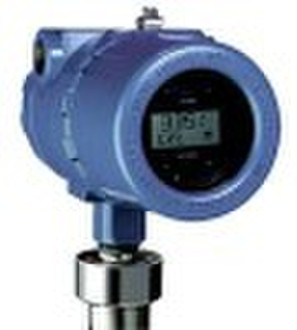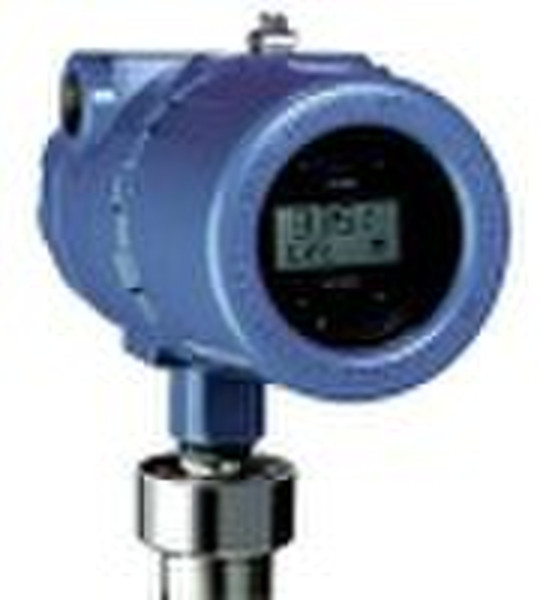Catalog
-
Catalog
- Agriculture
- Apparel
- Automobiles & Motorcycles
- Beauty & Personal Care
- Business Services
- Chemicals
- Construction & Real Estate
- Consumer Electronics
- Electrical Equipment & Supplies
- Electronic Components & Supplies
- Energy
- Environment
- Excess Inventory
- Fashion Accessories
- Food & Beverage
- Furniture
- Gifts & Crafts
- Hardware
- Health & Medical
- Home & Garden
- Home Appliances
- Lights & Lighting
- Luggage, Bags & Cases
- Machinery, Hardware & Tools
- Measurement & Analysis Instruments
- Mechanical Parts & Fabrication Services
- Minerals & Metallurgy
- Office & School Supplies
- Packaging & Printing
- Rubber & Plastics
- Security & Protection
- Service Equipment
- Shoes & Accessories
- Sports & Entertainment
- Telecommunications
- Textiles & Leather Products
- Timepieces, Jewelry, Eyewear
- Tools
- Toys & Hobbies
- Transportation
Filters
Search
Rosemount Level Transmitter 3300

Zhuang Chris
Contact person
Basic Information
| Place of Origin | United States |
|---|---|
| Brand Name | Rosemount |
| Model Number | 3300 |
Easy installation and commissioning through two-wire technology, and pre-configured transmitter or user-friendly configuration with included PC software package. Trouble-free operation since the transmitter is virtually unaffected by dust,vapor, interfering obstacles, and turbulence. It is even suitable for small or oddly shaped tanks. Direct level measurement means no compensation for changes in temperature, pressure, density, dielectric, or conductivity. Robust modular design with dual compartment housing, which can be removed without opening the tank. High application flexibility with a wide range of probe styles in different materials and options to handle corrosive media, extreme temperature and pressure. Multivariable level and interface transmitter reduces process penetrations and installation costs. Measurement Principle Rosemount 3300 Series is based on the Time Domain Reflectometry (TDR) technology. Low power nano-second microwave pulses are guided down a probe submerged in the process media. When a radar pulse reaches media with a different dielectric constant, part of the energy is reflected back to the transmitter. The time difference between the transmitted (reference) and the reflected pulse is converted into a distance from which the total level or interface level is calculated. The intensity of the reflection depends on the dielectric constant of the product. The higher the dielectric constant value is, the stronger the reflection will be. The transmitter uses Dynamic Gain Optimization which means it automatically adjusts gain to maximize the signal-to-noise ratio in each application. This increases measurement reliability and capability. Applications The Rosemount 3300 Series can be used for level measurements on most liquids, semi-liquids, some solids and liquid/liquid interfaces. The 3300 Series consists of two models: Rosemount 3301, Guided Wave Radar Level Transmitter for liquids and some solids. Rosemount 3302, Multivariable Guided Wave Radar Level and Interface Transmitter for liquids. Rosemount 3300 Guided Wave Radar transmitters offer high reliability and performance. Measurements are virtually unaffected by temperature, pressure, vapor gas mixtures, density, turbulence, bubbling/boiling, varying dielectric media, and viscosity. Since the waves are guided along the probe, this technology is excellent for small and narrow tanks / tank openings. The Rosemount 3300 Series is suitable for measurements in the following industries: Oil, gas and refining Chemical and petrochemical Power Pulp and paper Water and sewage treatment Food and beverage Pharmaceutical; System Integration INPUTS / OUTPUTS The 3300 Series transmitter uses the same two wires for both power supply and output signal (loop-powered). See page Level-16 for more information about power supply. Measurement data is transmitted as an analog 4-20 mA signal with a superimposed digital HART® signal. The HART® signal can be used in a multidrop mode. As an option, the 3300 Series is available with Modbus output (requires separate power supply). However, HART® communication is used for configuration. By sending the digital HART® signal to the optional HART® Tri-loop, it is possible to have up to three additional 4-20 mA analog signals. See the Rosemount 333 HART® Tri-loop Product Data Sheet (document number 00813-0100-4754) for additional information. The transmitter is available with Intrinsically Safe or Explosion Proof certification. A safety isolator such as a zener barrier must be used for intrinsic safety. Refer to Product Certifications on page 17 and Ordering Information on page 28. DISPLAY Data can be read locally from the optional integral display or remotely by using the 4-digit Rosemount 751 Field Signal Indicator (see the Rosemount 751 Product Data Sheet, document number 00813-0100-4378). MEASUREMENT PARAMETERS From one Rosemount 3300 Series radar transmitter it is possible to receive multiple process variables. Details on parameters are given in the table below. * Interface measurement only for fully submerged probe, see page Level-11. CONFIGURATION Configuration can be performed using either a 375 Field Communicator or a PC with the Radar Configuration Tools software. This user-friendly software is Windows based and it is included in the transmitter delivery. To communicate with the transmitter, a HART® modem is required (see picture on page Level-4). The HART® modem is available in an RS232 or USB version (see Accessories Model 3301/3302 on page 36). Rosemount 3300 Series transmitters are compatible with the AMS Suite plant management software, which can also be used for configuration. For further information, visit emersonprocess.com/AMS. By filling out the Configuration Data Sheet (CDS), it is possible to order a pre-configured transmitter. POWER SUPPLY 4-20 mA with HART® The input voltage (UI)for HART® is 11-42 V dc (11-30 V dc in IS applications, and 16-42 V dc in Explosionproof / Flameproof applications). The maximum load resistance and power supply limitations for typical operating conditions can be obtained from the following diagrams and table. Product Certifications SAFETY NOTE A safety isolator such as a zener barrier is always needed for intrinsic safety. Probes covered with plastic and/or with plastic discs may generate an ignition-capable level of electrostatic charge under certain extreme conditions. Therefore, when the probe is used in a potentially explosive atmosphere, appropriate measures must be taken to prevent electrostatic discharge. Factory Mutual (FM) Approval Project ID: 3013394 E5 Explosion Proof for use in Class I, Div. 1, Groups B, C and D; Dust Ignition Proof for use in Class II/III, Div. 1, Groups E, F and G; With Intrinsically Safe connections to Class I, II, III, Div. 1, Groups A, B, C, D, E, F and G. Temperature Class T5 @ +85°C. Ambient temperature limits -40°C to +85°C. Factory Sealed. Approval valid for Modbus and HART® option. I5 Intrinsically Safe for Class I, II, III, Div. 1, Groups A, B, C, D, E, F and G, Class I, Zone 0, AEx ia IIC T4 Ta=70°C. Temp code T4 at 70°C max ambient. Control Drawing: 9150077-944. Non-Incendive Class I, Div. 2, Groups A, B, C and D; Suitable for Class II, III, Div. 2, Groups F and G. Non-incendive maximum operating parameters: 42 V, 25 mA. Temp code T4A at 70°C max ambient. Approval valid for HART® option. ATEX Approval E1 Flameproof: II 1/2 GD T80°C. EEx d [ia] IIC T6 (-40°C<Ta<+75°C). KEMA 01ATEX2220X. Um = 250 V. Approval valid for Modbus and HART® option. SPECIAL CONDITIONS FOR SAFE USE (X) When used in a potentially explosive atmosphere where the use of equipment-category 1 apparatus is required, appropriate measures must be taken to prevent electrostatic discharge. I1 Intrinsic Safety: II 1 G EEx ia IIC T4 (-50°C<Ta<+70°C). BAS02ATEX1163X Ui=30 V dc, Ii=130 mA, Pi=1.0 W, Li=Ci=0. Approval valid for HART® option. SPECIAL CONDITIONS FOR SAFE USE (X)
Delivery terms and packaging
Packaging Detail: Regular export cargo container and package up to client's request. Delivery Detail: 20 Days shipped to destination upon order
Port: Shanghai (or other southern China port up to client's preference)
Payment term
Telegraphic transfer
Western Union
-
Payment Methods
We accept:









